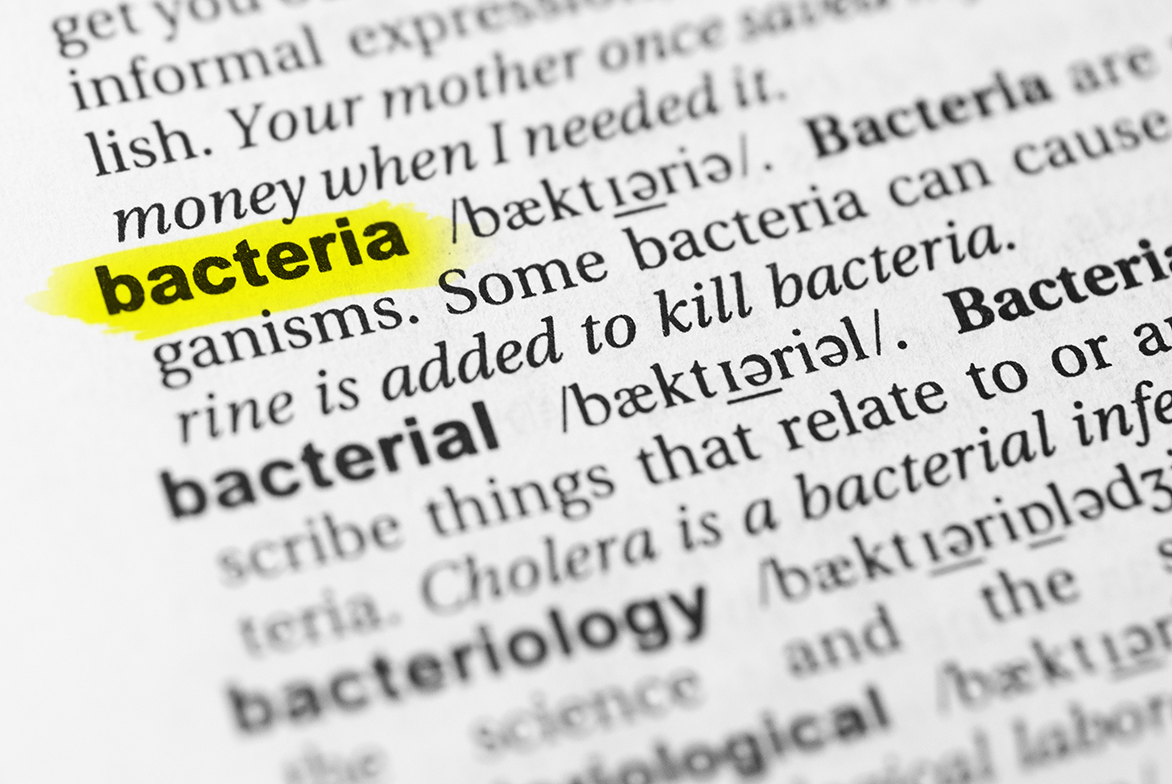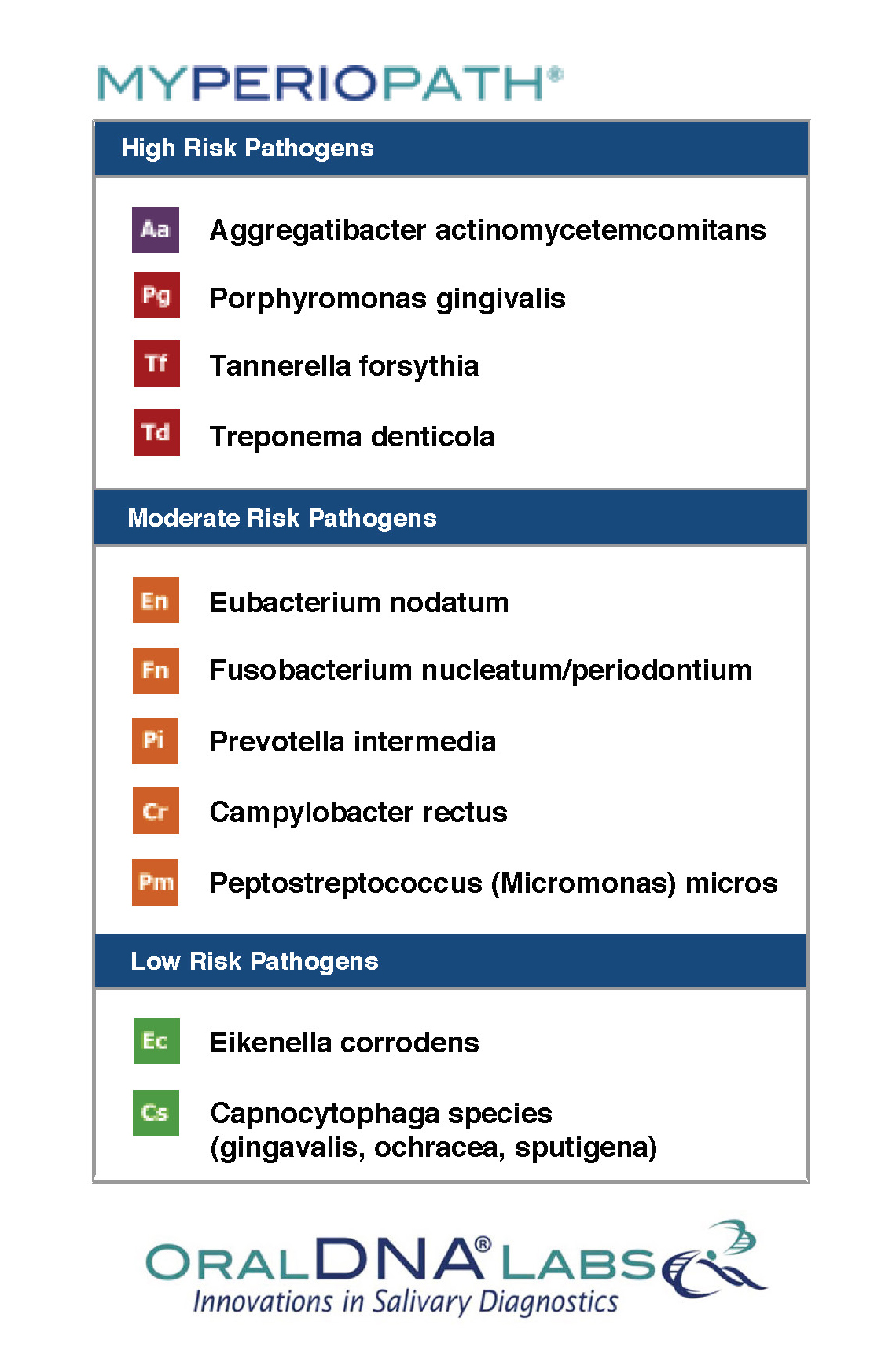
MyPerioPath® is a laboratory test widely used by health care professionals to screen for pathogens that cause both periodontal and systemic infections. The rich report provided to clinicians includes an easy to read histogram showing the types and quantities of 11 specific periodontal pathogens detected from a simple saliva sample. Two frequent questions about MyPerioPath®’s histogram will be discussed in this week’s blog. First, what is the full name of each bacteria listed on each report? Second, what do the categories of High Risk, Moderate Risk and Low Risk Pathogens mean?
The scientific name of each pathogen on the MyPerioPath® report is listed on page 2 in the methodology section of the report. They are:

The presence of these specific bacteria is tested for in each saliva sample. While thousands of other microorganisms exist in the oral cavity, these 11 pathogens have been determined to cause of the majority of periodontal infections, though they are not the only culprits to cause periodontal infections. The three categories, High Risk, Moderate Risk and Low Risk, represent the relative risk associated with development of periodontal disease.1,2 These same oral bacteria may also contribute to a wide range of systemic diseases such as diabetes, cardiovascular disease, and arthritis. Decades of research support knowing these bacteria, and are the basis of our modern day periodontology. Better management of these bacteria should result in better oral health, and ultimately better overall health.
References:
- Thomas F. Flemmig and Thomas E. Beikler. Control of oral biofilms. Periodontology 2000 55 (2011): 9-15.
- Philip D. Marsh, Annette Moter, and Deirdre A. Devine. Dental plaque biofilms: communities, conflict and control. Periodontology 2000 55 (2011): 16-35.
For more information on how to become an OralDNA Provider – scan HERE: 
- Consumer-Friendly Lab Reports - October 6, 2023
- Microbiology Terminology - March 24, 2023
- Microbiology 101 - January 3, 2020
